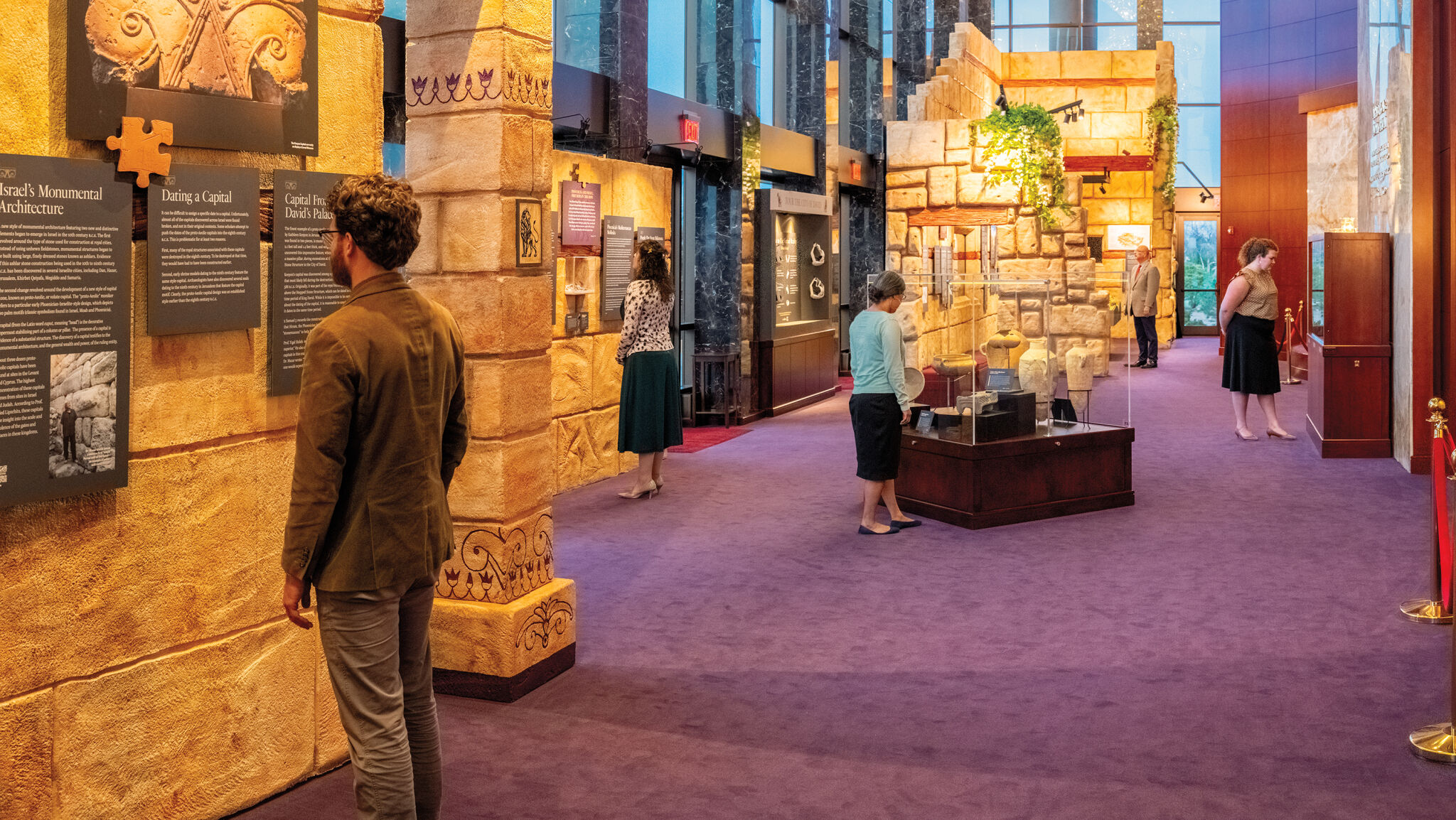On May 15, we closed the doors to our archaeological exhibit “Kingdom of David and Solomon Discovered.” For 14 months, interested visitors from all over the world had the opportunity to tour the exhibit and immerse themselves in the archaeological discoveries related to the Bible’s foremost kings.
This was our third, and most important, archaeological exhibit. We are not a museum. Instead, we fill the illustrious lobby of Armstrong Auditorium—a renowned concert hall in Edmond, Oklahoma—with artifacts, storyboards and original artwork. With each of our exhibits, our goal is to take the science of an important epoch in biblical history and bring it to life! And with each of them, we aim high, not just in the narrative and presentation but also in the artifacts that we acquire. We strive to feature the best and most compelling items related to the history we are showcasing.
For nearly 60 years, we have been involved in the archaeology of Jerusalem. This has opened the door to some incredible opportunities, including our exhibits.
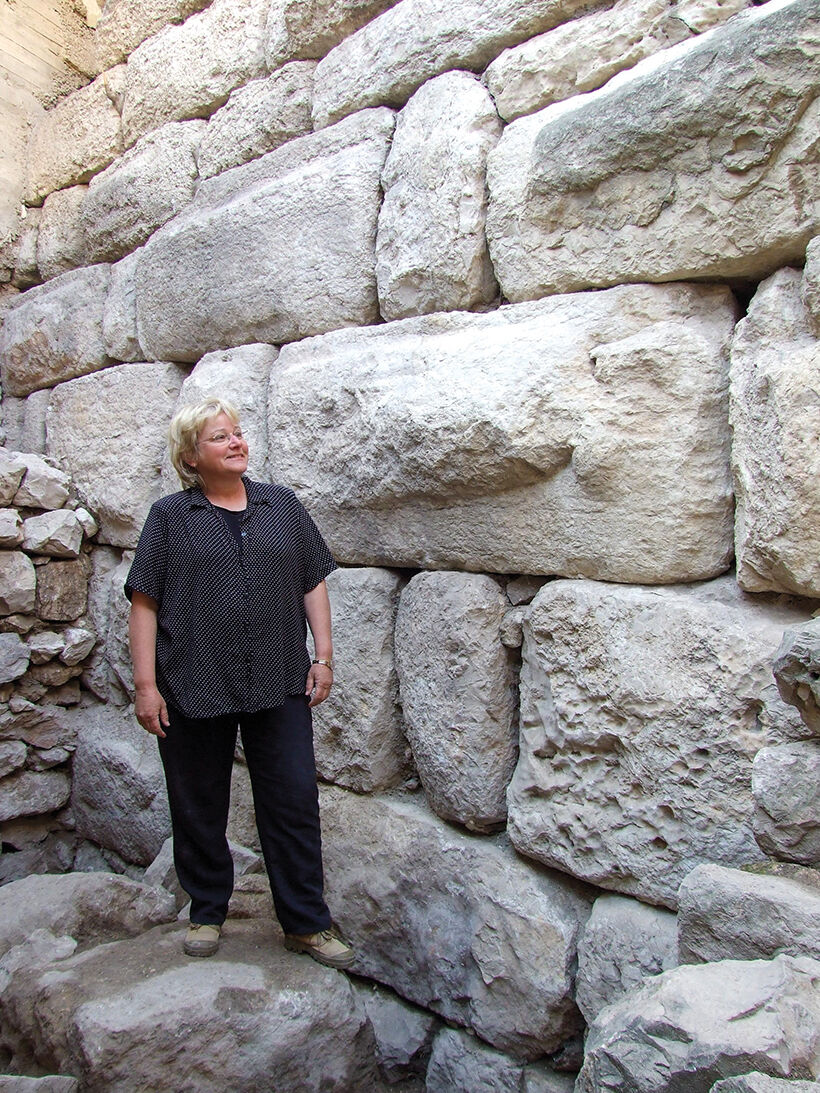
We sent volunteers to assist the late Dr. Eilat Mazar on her 2006–2007 and 2007–2008 excavations at the summit of the City of David in Jerusalem. During these excavations, Dr. Mazar discovered two remarkable seal impressions: Jehucal, son of Shelemiah, and Gedaliah, son of Pashur. These two men are mentioned in Jeremiah 38:1 as enemies of the Prophet Jeremiah.
After those initial excavations, Dr. Mazar floated the idea of sending some of the less prominent discoveries back to Oklahoma for display on our campus. We thought this was a great opportunity for an exhibit and coordinated with Dr. Mazar’s staff to settle on the artifacts we could showcase.
At first, we didn’t think it would be possible to exhibit the seal impressions of Gedaliah and Jehucal. We were, after all, located in central Oklahoma—not New York, London or Paris. These two biblical seals, only discovered in the few years previous, hadn’t even left Dr. Mazar’s office at Hebrew University, let alone been exhibited to the public.
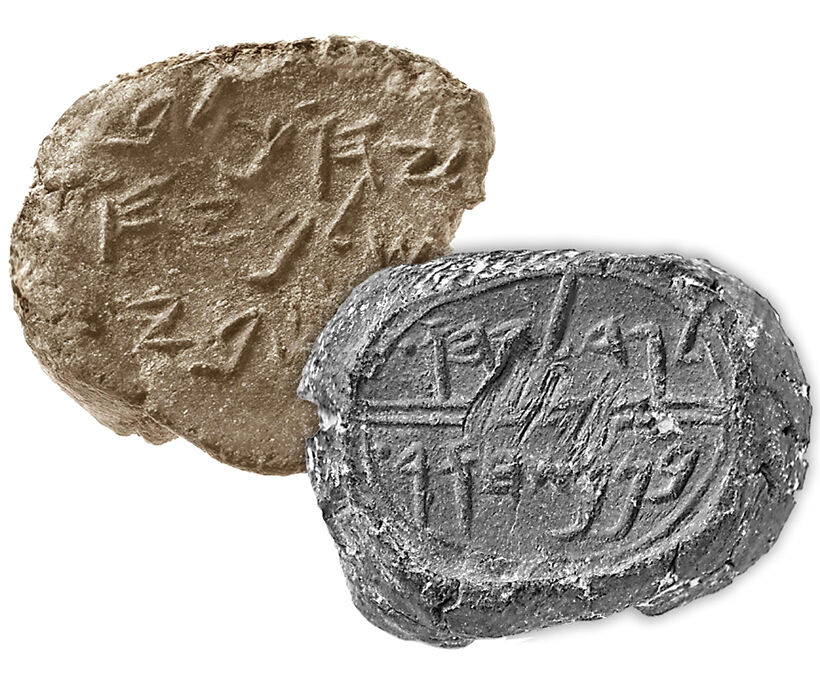
And yet, somehow, it happened. But not without difficulty.
I remember the August 2011 phone call with Dr. Mazar as if it were yesterday. A few months before this particular call I had suggested the possibility of Armstrong exhibiting the biblical seals, but this was met with an emphatic “No,” not just to Jehucal or Gedaliah but to any of the other nonbiblical named seal impressions found on the dig. Yet as we got deeper into the exhibit planning, I was encouraged by Armstrong Institute of Biblical Archaeology (aiba) director Stephen Flurry to try again.
So, rather uncomfortably, I did.
I started the conversation by stating how excited we were to have ancient artifacts from Jerusalem on campus. The pottery vessels, the stone weights, the Babylonian arrowheads would all contribute to a wonderful narrative for the exhibit. Eilat offered her advice and said that if I found any pictures from her books that I wanted, we could get the originals from her.
Then, with the conversation winding down, I finally took a deep breath and asked: “We would really like to include a seal impression in the exhibit. Is it possible for us to receive one of those?” I didn’t mention Gedaliah or Jehucal, as we had found many others without biblical names. I was just testing the waters to see if getting a less important seal impression was possible.
But then she responded, “Did you want Gedaliah or Jehucal, or one of the other bullae?” Shocked that she didn’t blow the proposition out of the water, I went with it and said, “Well, we would really like to have Gedaliah or Jehucal.” She replied, shocking me further, “Well, Brent, this is a good request.” She then began thinking out loud how it would be difficult because such an item is priceless. She mentioned that if it were just her decision, she would send the seal to us since we had literally sweated on the excavations in order to discover those artifacts.
However, it wasn’t just up to her. Any discovery made in Israel belongs to the State of Israel, and these had never been seen by the public anywhere; our exhibit would be their world premiere. She concluded the call by saying that she’d do her best to add one of the biblical seal impressions to our exhibit.
I don’t know what she did behind the scenes, but in less than a day, not just one but both of the biblical seals of Jeremiah’s captors were coming to Oklahoma. Receiving that answer was one of the most exhilarating experiences of my life!
Of course, I fired off an e-mail of gratitude to Dr. Mazar immediately. To which she responded, “You are most welcome. It seemed that these two bullae should not be separated. They tell the same story and relate to the same verse in the book of Jeremiah. Unbelievable! Now you are challenged by that story and need to figure out how to best present it in the exhibition. I trust you to make a big story out of it. Enjoy. Eilat.”
Less than six months later, the exhibit “Seals of Jeremiah’s Captors Discovered” opened in Armstrong Auditorium.

I tell this story, not to boast, as indeed it was the generosity of Eilat Mazar and the State of Israel that allowed us to showcase the artifacts, but rather to illustrate how our plunge into archaeological exhibits began. From the very beginning, we have pushed hard to answer Eilat’s call and make our exhibits worthy of the artifacts we are privileged to showcase.
In 2012, we exhibited the seal impressions of Jeremiah’s captors. The subject of our second exhibit, in 2018, took a gigantic leap in importance. In this exhibit we featured the recently discovered seal impressions of Isaiah and King Hezekiah—the first seal impression of a biblical king to have been unearthed in a scientific excavation and the first time the Isaiah bulla was shown to the public.
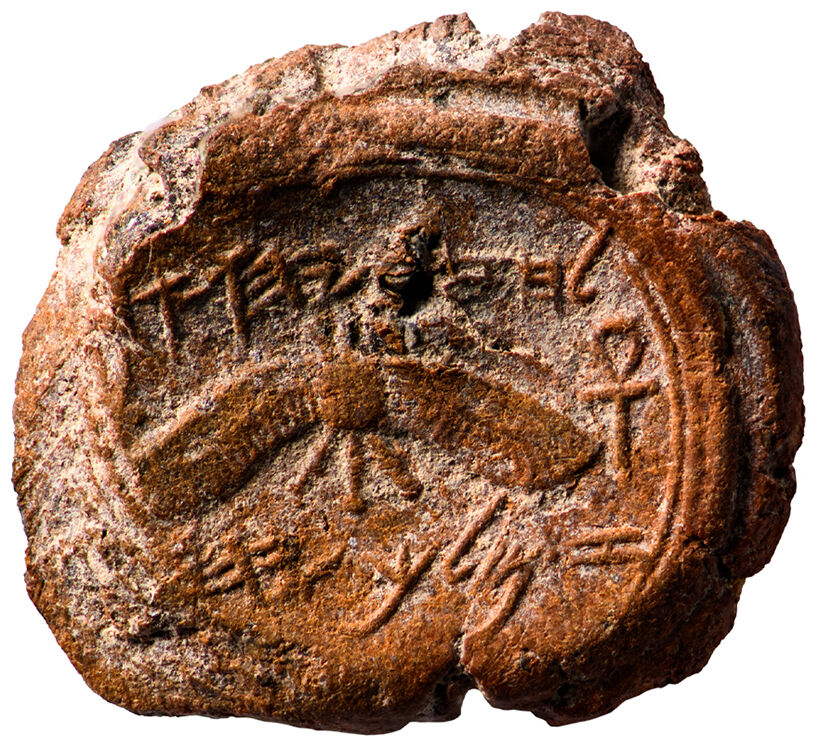
It was only natural, then, that when Dr. Orit Shamir, head of international exhibits at the Israel Antiquities Authority, approached us in January 2023 and asked if we’d be interested in hosting another exhibit, we had to go even bigger.
As we considered the options, we knew there is nothing bigger, and perhaps more consequential in biblical archaeology, than King David.
Alongside our partners at Hebrew University, the Israel Antiquities Authority and the Israel Museum of Jerusalem, we sought to assemble a list of the most important and highly prized artifacts showcasing the kingdom of David and Solomon.
But if displaying the seals of Jeremiah’s captors was going to be a challenge, putting together a David and Solomon exhibit was on a whole new level.
Unlike the other exhibits, where we followed a relatively simple single narrative as dictated in the biblical text, an exhibit about the united monarchy turned out to be far more difficult. The biblical narrative about David and Solomon takes up entire books of the Bible, covering almost a hundred years of history. It also happens to be one of the most controversial biblical periods—debated for its historicity by biblical scholars and archaeologists alike.
The goal of the exhibit was not to prove the Bible. We simply wanted to set the biblical narrative alongside the plethora of discoveries from the time of David and Solomon.
As we gathered all the available data for the exhibit, some powerful realizations set in. First, there was more scientific evidence for these kings than most people are aware. Second, we realized that the archaeological field is so hyper-specialized that rarely does an individual scholar have the ability or resources to collate all the available evidence from all excavations to present a single coherent picture of the 10th century b.c.e. While several archaeologists have studied the various individual parts of the David and Solomon story, no scholar had pieced them all together to form one overall understanding.
This became our goal: to collect the various individual pieces of the David and Solomon puzzle and present them in one overarching picture.
Based on the most recent archaeological work of over a dozen Israeli and international archaeologists, we found that when the at least 16 pieces of archaeological evidence are snapped together in just the right position, like a jigsaw puzzle, a compelling and plausible case can be made for the reality of a monumental kingdom of David and Solomon.
Thus, the “Kingdom of David and Solomon Discovered,” replete with almost 50 artifacts from 10th-century b.c.e. Israel, opened to the public on Feb. 25, 2024.
In the nearly 15 months we were open, we hosted over 14,000 patrons who came specifically for the exhibit (with many thousands more coming to attend concerts and touring the exhibit secondarily). The statistic we are most proud of is that 34 percent (4,500) of our visitors came from outside the state of Oklahoma—from 15 countries and 48 U.S. states. Some even drove from Canada or flew in from the Netherlands, Colombia and Australia to experience the exhibit.

Our team of 28 trained docents (most of them having worked in the field in Jerusalem) conducted 2,000 individual tours for guests, leading to a highly personalized experience. The tours lasted from 30 minutes to 2 hours, depending on the level of interest and expertise. We were thrilled to tour some important personalities too, such as U.S. Gen. Michael Flynn (Ret.), author and journalist Lee Smith and award-winning filmmaker and political commentator Dinesh D’Souza.
When D’Souza visited in September 2024, he gave the keynote address announcing the arrival and display of the most important artifact ever discovered relating to King David: the Tel Dan Stele. This ancient inscription is the oldest confirmed reference to King David outside of the Bible. When it was discovered in 1993, it declared emphatically that David was not a mythical figure.
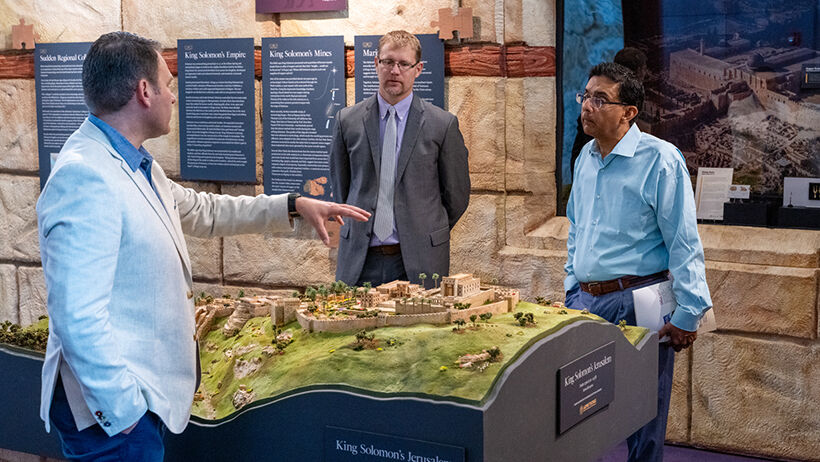
While it was always a dream of ours to bring the Tel Dan Stele to Oklahoma as part of the exhibit, we knew that was asking a lot of our Israeli friends. The stele is the Mona Lisa of the Israel Museum in Jerusalem, so we were overjoyed when the Israel Museum and Israel Antiquities Authority, in a spirit of goodwill and rich generosity, allowed the stele to be on display in our exhibit for two months—only the second time it has been on display in America.
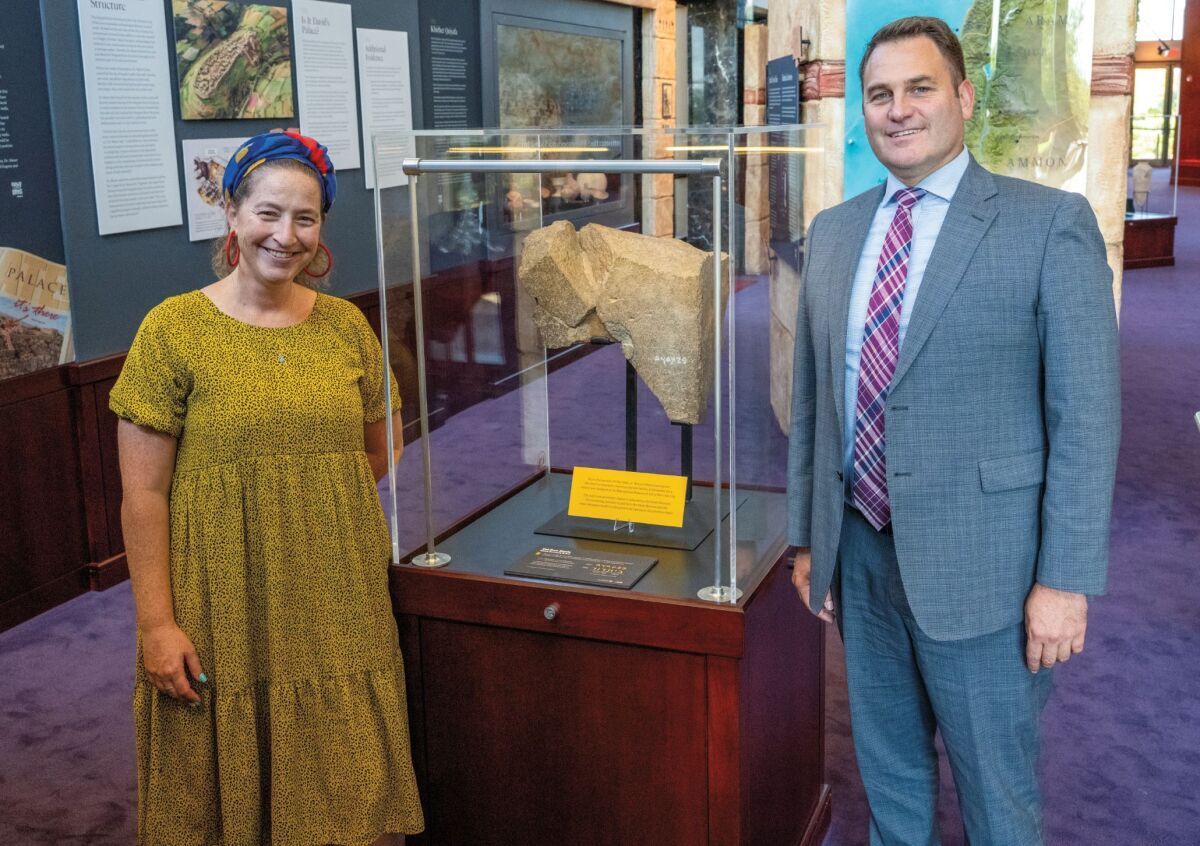
It truly was the crowning addition to the exhibit when it joined several other artifacts that were making their world premiere. Some of these included the 10th-century Ophel Pithos inscription (the oldest alphabetical inscription found in Jerusalem), the 10th-century golden jewelry basket pendant from Jerusalem (earliest proof of a Phoenician presence in Jerusalem), two 10th-century stamp seals from Jerusalem, as well as four 10th-century textile fragments from Timna. Added to this were other unique pottery vessels, bronze and iron weaponry, architectural elements and, most notably, the 10th-century b.c.e. shrine model on loan from the Israel Museum, which features similar architectural elements to the biblical description of King Solomon’s temple and palace in Jerusalem.

We knew that more people than could visit the exhibit in Oklahoma would be extremely interested in this rich history, so we also provided a free virtual tour online, which will continue to be available.
The exhibit contained a lot of science—more than can be explained on storyboards or by a tour guide. For that reason, we put together a 130-page, full-color magazine explaining in greater detail the archaeological and scientific argumentation for the time period of David and Solomon. This we made freely available to all our guests and to any who request it around the world. This magazine seeks to take the archaeology of David and Solomon from the access-restricted and hard-to-read scholarly world of scientific journals and excavation final reports and explain it in an easy-to-follow manner that is accessible to all.
We are pleased to announce that we have distributed the magazine to over 20,000 people and have even translated and printed the entire work into Hebrew. Please e-mail letters@ArmstrongInstitute.org or click here to request your free copy.
Even though the artifacts are returning to Israel and will be displayed in several museums, the message of “Kingdom of David and Solomon Discovered” still lives and is available to all who request it.
Thank you to all of the guests who took time and invested money to come to Oklahoma to see the exhibit. I personally feel very grateful to have met and toured many of you through the exhibit during your visits—many of you subscribers to this magazine.
Thank you also to Hebrew University of Jerusalem, the Israel Antiquities Authority, the Israel Museum of Jerusalem, the City of David Foundation, the Bible Lands Museum Jerusalem and the Timna Valley Archaeological Expedition. Collaboration with all of our partners has been a pleasure; only with you was a successful exhibit possible.
Finally, looking back on 15 years of exhibits, we can’t help but honor the lady who first conceived of the idea of us showcasing Jerusalem’s discoveries in Oklahoma: Dr. Eilat Mazar. All of our exhibits have featured the world premiere of important biblical-period discoveries from excavations led by Dr. Mazar. She took a chance on us in 2011, putting her reputation on the line in order to hand over the seals of Jeremiah’s captors into our safekeeping. Then again in 2018, with what she called her greatest single discovery: the seal impression of King Hezekiah himself. Then, far too soon, Eilat Mazar died on May 25, 2021, four years to the day from when I’m writing this article. We used a portion of the exhibit to remember the life and hold true to the archaeological legacy of Dr. Eilat Mazar, our friend and archaeological mentor.
It is our hope she would have been proud of what we were able to accomplish and would have said, “We made a big story out of it!”
